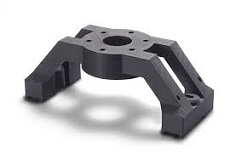
3D printing is an additive manufacturing process that creates an object by depositing thin layers of material on top of each other. The material can range from plastic, metal or cement in liquid or powdered form. This is different from traditional manufacturing processes such as casting or injection molding where you first need to create a die and either stamp or mold the object from the die. As a result, 3-D printing provides number of advantages to manufacturers that otherwise could not be achieved in the past. That is why 3-D printing has been gaining popularity with all types of manufacturers in the last decade. Below we describe number of benefits 3D printing provides.
- Reduced Cost – Manufacturing parts with 3D printing is much faster than traditional methods. You don’t need to create die or mold first. Also, you don’t need to buy expensive machines and hire skilled operators. With 3D printing you can feed the digital blueprint of your product and the machine more or less runs by itself to produce the part. You can even run it during the night.
- Increased Speed – Manufacturers can produce parts with 3D printing much faster. There is no need to create a die or mold, as well as perform quality checks, which reduces the time it takes to produce the product significantly.
- Improved Quality and Consistency – 3D printing relies on having a digital blueprint of the product and feeding it to the machine, which creates the product according to the specification provided in the digital design. This removes human errors, and eliminates inconsistency that may result when different people are operating the machine. As a result of automation and precision, the quality and consistency of products manufactured with 3D printing are vastly superior to traditional ones.
- Complex Products – 3D printing can manufacture products that are not possible to make with the traditional manufacturing. Because of the unique nature in which 3D printers create parts with pbf additive manufacturing it can manufacture very complex shapes and sizes.
- Better Prototyping – 3D printing is ideally suited to develop prototype parts that need to be produced in small batch. There is much less overhead when manufacturing parts with 3D printer. As a result, you can create prototypes much faster and at significantly lower cost than other processes.
- Less Overhead – Unlike traditional manufacturing, manufacturers do not need to build a plant or a manufacturing shop to produce parts, nor do they need hire skilled technicians to operate the machines. 3D printing machine manufacturer produces machines in various sizes to fit the needs of all types of manufacturers. This reduces the overhead cost for the manufacturers significantly.
3D printing has become quite popular with many types of manufacturers as a result of the benefits mentioned above. Make sure you are taking advantage of it to reduce cost and improve speed, quality and consistency.






